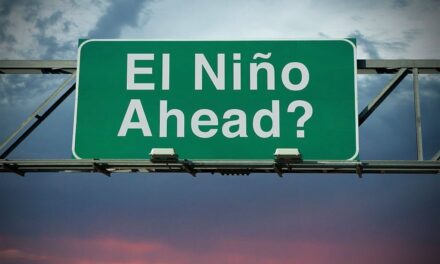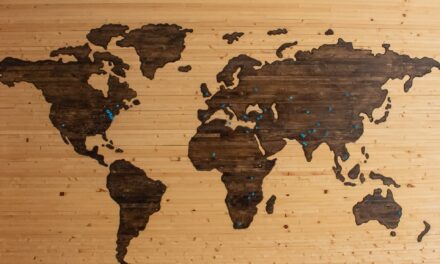What Causes Earthquakes?
Earthquakes are primarily caused by the movement of tectonic plates beneath the Earth’s surface. The Earth’s crust is divided into several large and small tectonic plates that are constantly shifting. These plates can move apart, collide, or slide past each other. When the stress from these movements becomes too great, it’s released in the form of seismic energy, resulting in an earthquake.
The point within the Earth where the earthquake originates is called the “focus” or “hypocenter.” The point directly above the focus on the Earth’s surface is the “epicenter.” The seismic waves generated by the release of energy travel outward from the focus, causing the ground to shake.
Types of earthquakes:
1. Tectonic Earthquakes: These are the most common type of earthquakes and occur due to the movement of tectonic plates. They are responsible for the majority of seismic activity worldwide.
2. Volcanic Earthquakes: Volcanic earthquakes are associated with volcanic activity and the movement of magma beneath the Earth’s surface. They often precede or accompany volcanic eruptions.
3. Human-Induced Earthquakes: Some earthquakes are triggered by human activities such as mining, reservoir-induced seismicity (due to the filling of large reservoirs), and hydraulic fracturing (fracking).
Seismic Zones
The Earth’s surface is not equally prone to earthquakes. Certain regions are more seismically active than others due to their location near tectonic plate boundaries. These high-risk areas are categorized into seismic zones based on their earthquake risk. The most well-known classification system is the Richter scale, which rates the seismic activity on a scale of 0 to 10, with higher values indicating more powerful earthquakes. Here are some of the world’s seismic zones:
1. The Pacific Ring of Fire: This is one of the most active seismic zones in the world, encircling the Pacific Ocean. It is known for its frequent earthquakes and volcanic eruptions. Countries like Japan, Indonesia, and the west coast of North and South America are part of this zone.
2. The Himalayan Seismic Zone: This region is prone to earthquakes due to the collision of the Indian and Eurasian tectonic plates. Countries like Nepal, India, and parts of Pakistan are highly susceptible to seismic activity.
3. The San Andreas Fault Zone: Located in California, the San Andreas Fault is notorious for producing powerful earthquakes. It is a transform fault where the Pacific and North American plates slide past each other.
4. The Mediterranean Seismic Region: The Mediterranean basin is another active seismic zone, with countries like Italy, Greece, and Turkey experiencing significant earthquake activity.
5. The Alpide Belt: This seismic belt stretches from the Atlantic Ocean through Europe and Asia to the Himalayas, affecting regions such as Iran, Turkey, and parts of Europe.
6. The East African Rift Zone: This area is a developing rift in East Africa where the African plate is splitting into two smaller plates, making it susceptible to earthquakes.
7. The New Madrid Seismic Zone: Located in the central United States, the New Madrid Seismic Zone is a less-known but still significant area for earthquake risk.
Earthquake Precautions
Given the devastating potential of earthquakes, it’s essential to take precautions to protect ourselves and our communities. Here are some crucial earthquake safety measures:
1. Build Earthquake-Resistant Structures: Construction standards play a vital role in earthquake safety. Buildings and infrastructure in high-risk seismic zones should be designed and built to withstand the forces of an earthquake. This includes using flexible materials, reinforced concrete, and proper anchoring to prevent collapse.
2. Secure Heavy Objects: Heavy furniture, appliances, and objects should be secured to prevent them from toppling during an earthquake. Using wall anchors, brackets, and straps can help keep these items in place and reduce the risk of injury.
3. Create an Emergency Kit: Prepare an earthquake emergency kit that includes essential supplies such as water, non-perishable food, first-aid items, flashlights, batteries, and a portable radio. This kit will be invaluable in the event of an earthquake when access to basic necessities may be disrupted.
4. Develop a Family Emergency Plan: Create a family emergency plan that outlines where to meet, how to contact each other, and what to do in different scenarios. This plan should also include an evacuation route and a designated meeting point in case family members are separated during an earthquake.
5. Educate Yourself: Understanding earthquake safety is key to minimizing risks. Educate yourself and your family on the appropriate actions to take during an earthquake, including “Drop, Cover, and Hold On,” which is the recommended response during shaking.
6. Strengthen Infrastructure: Government agencies and local authorities in seismic zones should invest in strengthening critical infrastructure such as bridges, dams, and hospitals to ensure they can withstand seismic activity.
7. Early Warning Systems: Develop and implement early warning systems that can provide a few seconds to a minute of advanced notice before significant shaking reaches an area. These systems can save lives and reduce damage by allowing people to take cover.
8. Retrofit Older Buildings: Older buildings that were constructed before modern seismic building codes should be retrofitted to enhance their earthquake resistance. Governments and building owners should prioritize this retrofitting process.
9. Insurance Coverage: Consider earthquake insurance, especially if you live in a high-risk area. Standard homeowner’s insurance typically does not cover earthquake damage, so having the right insurance can be crucial for recovery.
10. Community Preparedness: Communities should organize drills, emergency response teams, and community preparedness programs to ensure that residents are well-informed and ready to act in the event of an earthquake.
Conclusion
In conclusion, earthquakes are natural disasters that can have devastating consequences. Understanding their causes, recognizing seismic zones, and taking appropriate precautions are essential steps in mitigating their impact. By building earthquake-resistant structures, securing heavy objects, creating emergency kits, developing family plans, and educating ourselves, we can better prepare for the unexpected. Additionally, governments, authorities, and communities must work together to strengthen infrastructure, implement early warning systems, and promote earthquake safety. Only through these collective efforts can we minimize the destruction and save lives when the ground beneath our feet starts to shake.










